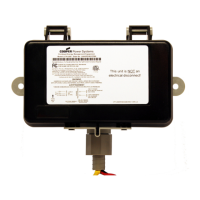KS 3-2010
Page 12
6.3 Insulation Resistance Test
CAUTION—If applied incorrectly, the voltages utilized in the insulation resistance tests may damage
electronic or other accessory components. Refer to the manufacturer's instructions for guidelines.
NOTE—Where the switch can be safely isolated as installed, the test may be performed with the switch in its equipment.
See Figure 3 for typical test set-up.
6.3.1 Purpose
To determine the adequacy of the insulation between line and load terminals, between poles, and
between each pole and ground.
6.3.2 Equipment
Perform dielectric tests in accordance with the manufacturer’s instructions.
This test requires an insulation resistance tester capable of applying a voltage of at least 500 volts. It
should also be noted that more in-depth information can be obtained when 1000 volt testers are used
since they are more likely to detect deteriorated insulation systems. (See Figure 3.)
Figure 3
Typical Insulation Resistance Test Set-Up
6.3.3 Procedure
WARNING—Follow all safety procedures described in Section 2.
CAUTION—If applied incorrectly, the voltages utilized in the insulation resistance test may damage
electronic or other accessory components. To avoid such damage, the following procedure should be
adhered to closely. Do not apply test voltages to accessory terminals.
6.3.3.1 After disconnecting and locking out all power supplying the device to be tested, remove the
switch from the electrical system. In cases where the switch can be safely
isolated/disconnected from line and load connections as installed, the test may be performed
with the switch in its equipment.
© Copyright 2010 by the National Electrical Manufacturers Association.

